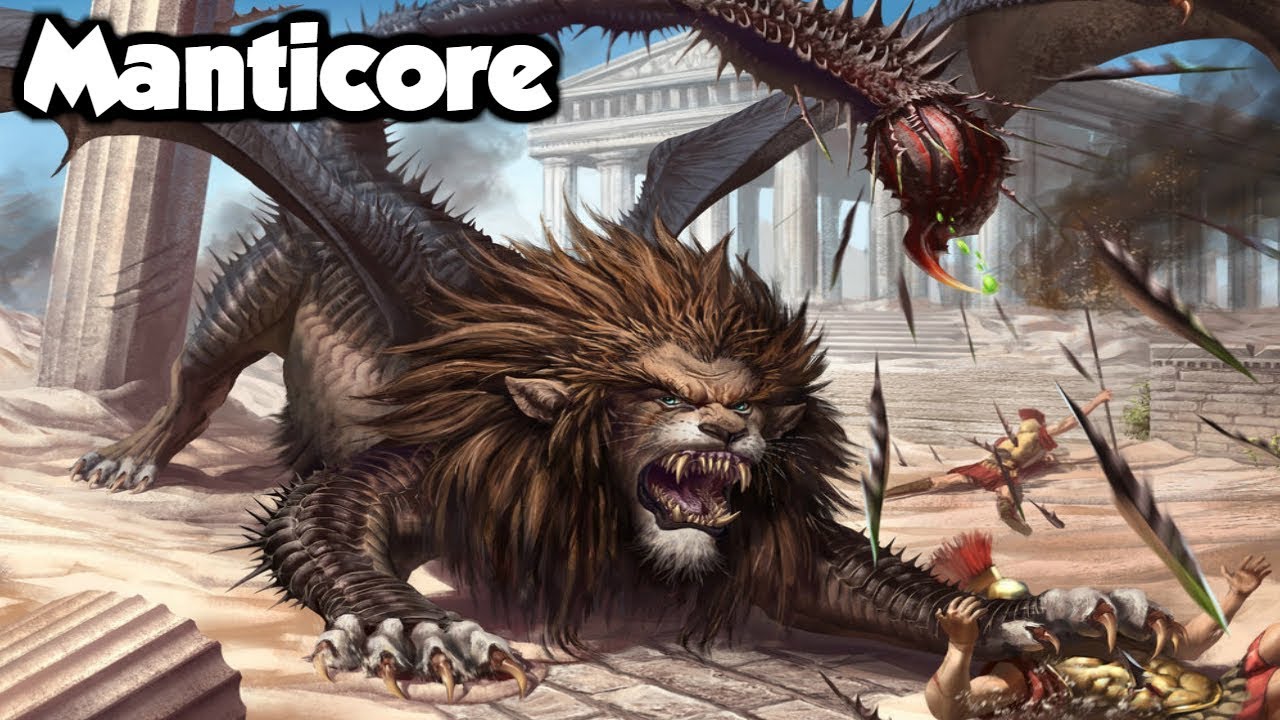Today, we are going to explore the fascinating world of Persian mythology and dive into the captivating realm of the Manticore. This mythical creature, known for its deadly nature, appeared in both Persian and Greek myths. Originating from Persian mythology, the Manticore was depicted with the head of a human, the body of a lion, and the tail of a scorpion. Often portrayed with poisonous spines or porcupine-like quills, it would shoot them from its tail to immobilize its victims from afar. With its rows of razor-sharp teeth, the Manticore was a fearsome maneater, leaving no bones behind. Although it has been mistaken for the medieval creature known as the demented tiger, the Manticore is distinctly different. Throughout this article, we will delve deeper into this monstrous beast, exploring its origins, characteristics, and the terrifying impact it has had in mythology.
The appearance of the Manticore has varied over time, transforming from a lion to a tiger, and even depicting bear-like features. While the creature originally did not have wings, it has developed web-like wings similar to that of a bat. This ability to fly adds another level of terror to its already formidable reputation. By replacing the head of a human with that of a lion, a fearsome predator, the Manticore becomes even more menacing. In comparison to the Sphinx, which takes a more intellectual approach by challenging its victims with riddles, the Manticore relies on instinctual behavior to hunt and devour its prey. As we explore the Manticore further, its combination of deadly attributes and its fearsome reputation as a predator will both captivate and intrigue you. So, have you ever heard of the Manticore before? Which combination of mythical creatures do you find the most terrifying and deadly? Share your thoughts in the comments below, and let’s journey into the captivating world of the Manticore in Persian Mythology.
Origin of the Manticore
Throughout various mythologies and folklore around the world, many mysterious creatures have captured the imagination of individuals seeking to understand the unknown. One such creature is the Manticore, a legendary beast that has its roots in Persian mythology. The origins of the Manticore can be traced back to ancient Persia, where it was believed to possess both human and animal characteristics. However, the influence of ancient Greeks cannot be overlooked when exploring the history of this intriguing creature.
Description of the Manticore
The Manticore is an intriguing creature that exhibits a unique combination of features from both humans and animals. According to Persian mythology, this creature possesses the head of a human, the body of a lion, and the tail of a scorpion. This hybrid appearance distinguishes the Manticore from other legendary creatures and contributes to its mystique. We can only imagine the awe and fear that this creature must have inspired in those who encountered it.
Physical Features of the Manticore
The physical features of the Manticore further enhance its reputation as a formidable and fearsome creature. One notable feature is its poisonous spines or quills, which are believed to be located along its back and tail. These spines serve as a deadly defense mechanism and deter potential attackers from engaging with the Manticore. Additionally, the Manticore possesses the ability to shoot these spines from its tail, adding to its arsenal of deadly weapons. Furthermore, this mythical beast is said to have razor-sharp teeth, allowing it to tear through flesh effortlessly.

Predatory Behavior of the Manticore
The Manticore is renowned for its predatory behavior and is often referred to as a lethal predator. It is known to be a maneater, consuming its victims whole without showing any mercy. This voracious appetite for flesh is legendary and has only served to intensify the fear and fascination associated with the Manticore. It is believed that its insatiable hunger drives the Manticore to constantly hunt for its next meal, perpetuating its reputation as a relentless predator.
Misconceptions about the Manticore
Throughout history, misconceptions about the Manticore have arisen due to various reasons. One such misconception is the confusion between the Manticore and the Medieval creature known as the demented Tiger. The demented Tiger, although also a mythical creature, possesses different characteristics and abilities compared to the Manticore. Another misconception stems from the evolution of the Manticore’s name. Originally known as “mudercor” in ancient Persia, the name gradually transformed into “Manticore” over time. This linguistic evolution has led to some confusion and misinformation about the creature’s true identity.
Comparison with the Sphinx
When discussing mythical creatures, it is often interesting to compare and contrast their attributes with similar creatures from other mythologies. The Sphinx, a creature from ancient Egyptian mythology, bears some similarities to the Manticore. Both creatures possess a combination of human and animal features, which contributes to their enigmatic nature. However, their behaviors differ significantly. The Manticore is driven by instinct in its hunt for flesh, while the Sphinx is known for its intellectual approach, often posing riddles to those who seek its wisdom.
Evolution of the Manticore’s Appearance
Over time, the appearance of the Manticore has undergone significant transformations. Ancient depictions of the creature portray it with a lion-like appearance, while later interpretations began to incorporate tiger-like characteristics. This evolution may have been influenced by cultural shifts and the introduction of new stories and legends. Additionally, some accounts suggest that the Manticore developed wings, enabling it to fly with great speed and agility. Another significant transformation occurred in the creature’s head, as it shifted from a human-like visage to a more bestial and terrifying form.
Terrifying Nature of the Manticore
The Manticore’s terrifying nature is evident in its physical attributes and predatory behavior. As a fast and strong predator, the Manticore strikes fear into the hearts of those unfortunate enough to encounter it. Its merciless approach to hunting and consuming its victims whole adds to its reputation as a relentless and vicious beast. Moreover, its dangerous abilities, such as flying and possessing razor-sharp teeth, make it a formidable opponent in any confrontation. The mere thought of facing such a creature is enough to send chills down one’s spine.
Familiarity with the Manticore
The Manticore, with its unique combination of human, lion, and scorpion features, is undoubtedly a creature that has captured the imagination of many. Have you heard of the Manticore before? If not, the existence of this mythical creature may come as a surprise. However, for those familiar with Persian folklore and mythology, tales of the Manticore have long been part of their cultural heritage. The Manticore’s iconic appearance and fearsome reputation make it an intriguing subject for those interested in exploring the depths of mythology and fantasy.
Conclusion
In conclusion, the Manticore is a fascinating creature that has its origins in Persian mythology. Combining the head of a human, the body of a lion, and the tail of a scorpion, the Manticore stands out among mythical creatures for its distinctive appearance. With its predatory behavior, venomous spines, and razor-sharp teeth, the Manticore strikes fear into the hearts of those who dare to cross its path. Although misconceptions and evolutions of its name have led to some confusion, the Manticore’s reputation as a fearsome and relentless creature endures. Its comparison with the Sphinx highlights the different approaches to knowledge and wisdom in various mythologies. Whether you find the Manticore terrifying or intriguing, its place in mythology and folklore is a testament to the enduring power of imagination and storytelling throughout the ages.
